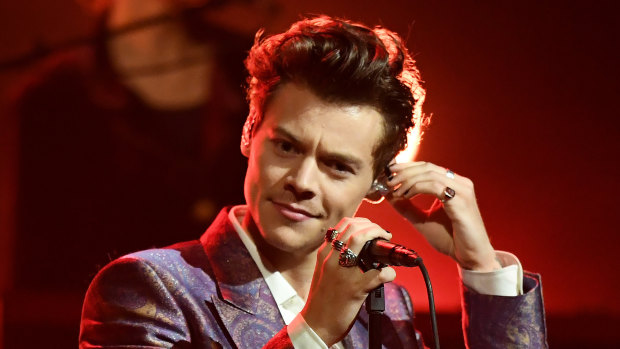This was published 4 years ago
Ticket prices up, but Australians aren't shunning live entertainment
By Broede Carmody and Sian Brain
Average ticket prices for live shows have increased by about 30 per cent in the past 10 years, according to a new report from Live Performance Australia.
Last year, the average ticket for a concert, festival, theatre show, dance performance or comedy gig would set you back about $99 – up almost 30 per cent from $76.60 in 2008. But rising costs haven't deterred Australians, with more people attending live shows than ever before.

Harry Styles was one of several international acts to tour Australia in 2018.Credit: AAP
In 2018 approximately 26.3 million tickets were issued to live performance events, generating revenue of almost $2.2 billion. In comparison, 2008 saw an estimated 15.8 million tickets sold – equating to just over $1 billion in revenue.
Contemporary music is by far the strongest performer for the live performance sector, accounting for around half of the industry's revenue. Almost 40 per cent of all live performance ticket sales are for contemporary music, followed by musical theatre (14.9 per cent of ticket sales). Theatre is the third-most popular category among New South Wales patrons, while in Victoria it is comedy.
The figures are contained in Live Performance Australia's 2018 ticket attendance and revenue report. LPA is the peak industry body for the country's live performance industries. LPA's chief executive, Evelyn Richardson, said it was clear there was a strong demand for live shows across the country, particularly in Victoria and NSW.
"The two biggest performing categories are contemporary music and musical theatre," she said. "I think with contemporary music you've got some very large stadium and arena shows travelling through. Obviously there's huge fan based and a mixed demographic. Australians love music."
Ms Richardson said while there was a "consistent trend" of growth when it comes to overall ticket sales, the future isn't entirely rosy for the live performance sector.
Circus arts and musical theatre, for example, recorded a decline in revenue between 2017 and 2018 – a development she hopes doesn't become a long-term trend.
"We are sounding a cautionary note for the future," Ms Richardson said. "Our small-to-medium companies are really struggling right now. When the Australian Council announces its four-year funding in February/March next year we know there's going to be up to 60 companies that aren't going to be funded.
"Federal funding over time is declining ... and you've got slow wage growth and consumer confidence. We're working in that context."